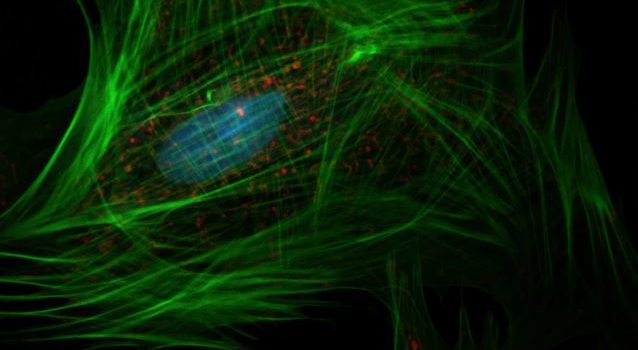

This article is an excerpt from the Shortform book guide to "The Selfish Gene" by Richard Dawkins. Shortform has the world's best summaries and analyses of books you should be reading.
Like this article? Sign up for a free trial here .
What does Richard Dawkins say genes are meant for? How does his theory of genetics explain behavior?
According to Richard Dawkins, genes are there just to keep replicating. The goal of any gene is to ensure replication and survival of the genetic line.
Read on for more about Richard Dawkins, genes, and selfishness.
Richard Dawkins: Genes 101
To start at a basic level, the replicator that all complex life forms host is DNA. DNA is a nucleic acid, a polymer made up of many molecules called nucleotides. There are only four types of nucleotides in DNA: adenine (A), cytosine (C), guanine (G) and thymine (T). Those nucleotides are identical no matter what kind of creature has them: You’ve got the same four nucleotides as your pet cat, or the birds outside. The only difference between different species is how those nucleotides are arranged. To a much lesser extent, they are also arranged differently between different people (except for identical twins).
Those nucleotides are then organized into genes. The genes are like blueprints for proteins, which are used for everything from creating tissue to regulating chemical processes. It’s a complex process to go from nucleotide to protein, but in simple terms, DNA is like a building plan for a living creature.
Whether a gene survives depends on whether the organism it helped create is able to survive and reproduce. How quickly “bad” genes die out depends on how strong the selection is—that is, how much of a disadvantage that gene will be.
In relatively safe environments, even disadvantageous genes can persist for many generations. For example, genes for albinism in humans have survived because, while they can cause serious health problems, the people carrying them don’t die in our current environment.
There are a number of factors that affect how long a given gene lasts, even if the creature does successfully reproduce. These are detailed in the next subsection. Theoretically, a gene could replicate itself through countless generations and “survive” indefinitely.
In short, it could be said that genes are responsible for their own reproductive success. Going one step further, it could be argued that replication is the very purpose of genes, dating back to those first primordial replicators.
Altruism and Selfishness at the Genetic Level
According to Richard Dawkins, genes are the starting point for evaluating selfishness and altruism. At the genetic level, altruism must be bad and selfishness must be good. Alleles (different versions of the same gene, such as for blue vs. brown eyes) are in direct competition with each other. Therefore, by definition, alleles that succeed at the expense of others will tend to survive.
However, according to Richard Dawkins, genes that are not alleles to one another interact in a way that is extremely complicated. For example, there’s no single gene for “long legs.” Rather, there are many, and each of them has some sort of influence on leg length. In an environment where long legs are beneficial, all of the alleles which contribute to that trait will be favored by natural selection.
This isn’t an absolute truth—favorable alleles can still fail if they’re in an organism with other disadvantages, or simply due to bad luck. However, in the long term, the frequency of a given gene in the population is (usually) directly proportional to how beneficial that gene is—that’s how evolution works. To summarize Richard Dawkins, genes that support survival will be seen more often.
There are very few genetic qualities that are objectively good or bad. For example, an herbivore with a gene for sharp, pointed teeth would be at a disadvantage, since such teeth aren’t as effective at tearing and grinding plant matter. A carnivore with that same gene would be much more successful. Most advantages and disadvantages are environmental. For a gene, the environment is other genes—such as what kind of animal a gene for sharp teeth is in.
Keep all of this in mind when considering altruistic or selfish behaviors in an individual. The ultimate question is what effect those behaviors will have, in the long term, on the frequencies of certain genes in the population. According to Richard Dawkins, genes are at the root of all explanations.

———End of Preview———
Like what you just read? Read the rest of the world's best book summary and analysis of Richard Dawkins's "The Selfish Gene" at Shortform .
Here's what you'll find in our full The Selfish Gene summary :
- Why organisms don't matter, only genes do
- How all life forms begin with a replicating molecule
- How species need to balance aggression and pacifism to survive






